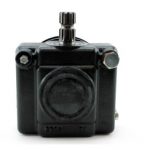If you plan to be serious about your lawn, then it is essential that you perform a pH soil test. Knowing the pH level of the soil on which your lawn rests can mean the difference in having and not having a healthy lawn.
The purpose of a pH soil test is to determine if your soil is acidic or alkaline. It actually measures the amount of hydrogen ions there are in the soil.

Chickweed is a sign that the soil under your lawn is predominantly alkaline.
(Courtesy: SmithRiverFriend at flickr.com)
The pH measurement that is obtained through the test is based on a logarithmic scale that runs from 0 to 14. Any measurement less than 7 indicate that the soil is alkaline, 7 means it is neutral, and higher than 7 shows that the soil is acidic. Each value increase in the scale is actually 10 times. So, if your test shows a value of 8, the soil is actually 10 times more alkaline than soil that gets a rating of 7.3 and 7.3 is 10 times more acidic than a rating of 4.
If you tested pure water for its pH level, you would get a neutral measurement of 7. If you test milk from a cow, you would get a measurement of 6.5, which is slightly acidic. Beer and tomatoes measure 4.5. Lemons, of course, are very acidic and would measure 2.5 and stomach acid would have a value of 2.0.
Your lawn will thrive in a soil pH level of 6.0 to 7.5, which is considered to be the neutral range of the scale. Actually the weeds that appear on your lawn can provide a sign of the pH level of the soil. For example, dandelions and plantain thrive in acidic soil while chickweed, Queen Anne’s Lace, and chicory perform well in alkaline soil.
Although most homeowners would probably gather a sample of soil and send it into an expert to determine pH levels, the test is simple enough to perform yourself.
Testing for alkalinity is a six-step process.
1. Gather a soil sample from about 4-inches to 6-inches below the turf. It is probably best to grab samples from three to four different locations of your lawn.
2. Remove stones, sticks and other debris and break up any large clumps.
3. Put about 1 cup of soil into a clean, glass container.
4. Add enough water to turn the soil to mud.
5. Add a half-cup of vinegar, and then stir slightly.
6. If the soil fizzes, foams, or bubbles, the soil is alkaline. If not, test for acidity.
Testing for acidity is also a six-step process.
1. Take a sample of soil about 4-inches to 6-inches below the surface of the lawn. The sample should not have any vinegar on it.
2. Remove stones, sticks or other debris and break up the clumps.
3. Put about 1 cup of soil into a clean, glass container.
4. Add enough water to turn the soil to mud.
5. Add half a cup of baking soda and stir.
6. If the soil fizzes, foams, or bubbles, the soil is acidic.
If both tests don’t produce much of an effect, then the soil is probably in the neutral range.
For an exact measurement, get a hold of a pH soil test kit or send the soil sample to a lab for testing. Test kits are available from garden centers and local cooperative extension services. A representative of the cooperative extension service will also test the soil for you.
Generally speaking, adding lime to acidic soil makes it neutral and adding sulfur to alkaline soil makes it neutral.







